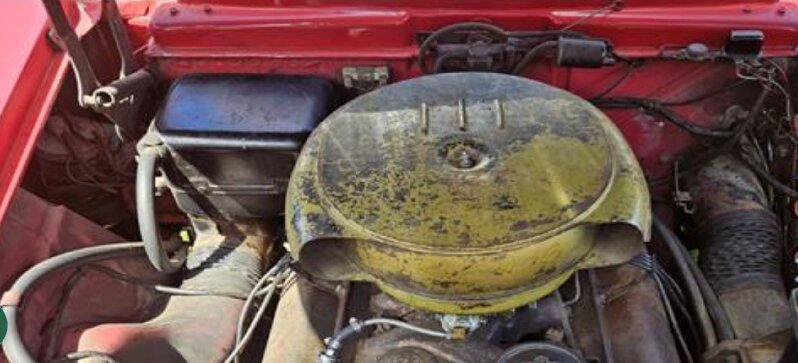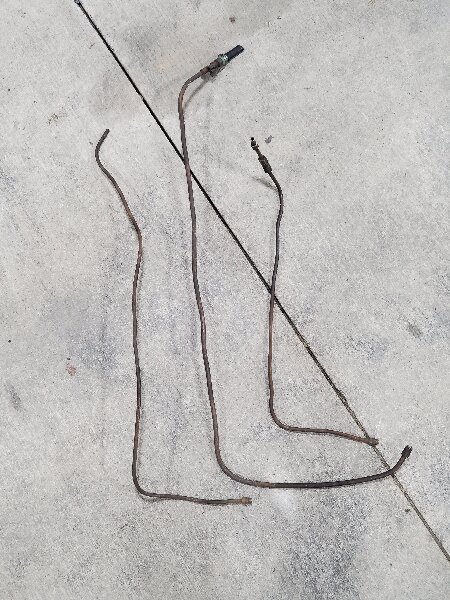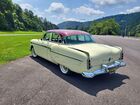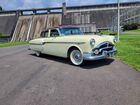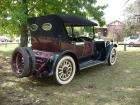|
Vacuum Lines, Windshield Wipers
|
||||
|---|---|---|---|---|
|
Home away from home
|
It seems like the topic of vacuum line connections and wiper/washer operation comes up a lot. Hopefully this will clear the air a bit and get everything in one place.
Vacuum comes from two sources: the engine vacuum pump in the crankcase, and the engine manifold. It is used for 3 things: - distributor advance - windshield wipers/washer - power brakes (if equipped) These are connected in 3 different ways. Reference the carburetor picture below. The two lower carbs are R4GC as used on a 55 senior car. The top one is a Carter, for a junior car. - the distributor advance has a dedicated port and vacuum line, indicated by the teal arrows. This is so it is not affected by vacuum demand from other devices which would cause drops in the vacuum reading. - the windshield items are powered by a tube indicated by the blue arrow. You can see the port in the Carter carb also, though the tube is missing. - the power brakes are connected through a check valve indicated by the red arrows. This is so vacuum is preserved in case of engine failure; there is a reserve canister also, which will be mentioned later. For cars without power brake, this valve is simply replaced with a plug. Now direct your attention to the engine bay photo and the three diagrams. Packard gave these three drawings of the windshield item connections; between them, it's easy to see the physical connections. The power brake connections you will need to refer to the photo only. The line to the power brake is shown with lime green arrows. Note the T connector inline which connects the reserve cylinder indicated by the cyan arrow. The lines for wiper power both go to the balancing valve first. These being the line from the carb (manifold vacuum), shown in deep blue, and the line from the engine vacuum pump, shown in purple. The balancing valve is simply a double check valve that allows only the line with a stronger vacuum to power the wipers. In addition to these two ports, the valve functions as a T connector for its devices. The left side runs to the wiper motor power port and the right side, shown in pink, runs to the washer power port. The wiper is speed-controlled by a Bowden cable, orange, that moves a sliding pneumatic valve to adjust the vacuum connection to the motor proper. The range of travel of the motor is separately controlled by a cam with two profiles. The default position is the shorter range of motion. When a vacuum connection is completed through the red lines, a piston moves this cam to a different position, allowing the wiper to do the full stroke. The connection is accomplished through a sliding pneumatic valve on the wiper control. When the wiper button is pushed in, a stud on the back of the unit is grounded. This is connected to the ground lead of the washer, with its other lead connected to the fuse panel. This electrical circuit activates the washer. The vacuum power connection is indicated in pink. The dark green is the washer fluid connection to the base of each wiper arm mount. Lastly, the yellow arrows are the coordinator and its vacuum line (which fell off). The coordinator is connected to the wiper motor and is just a vacuum piston. When activated, it pulls the wiper motor valve to the open position, activating the wipers to accompany the spray. Hose sizes (all ID): Power brake, all: 3/8" Balancing valve except washer: 1/4" All washer vacuum: 3/16" Washer hose from washer: 1/4" Washer hose to wipers: 1/8" Range select hose: 1/8" Hope this helps!  Attach file:  20240530_211041.jpg (4,123.26 KB) 20240530_211041.jpg (4,123.26 KB)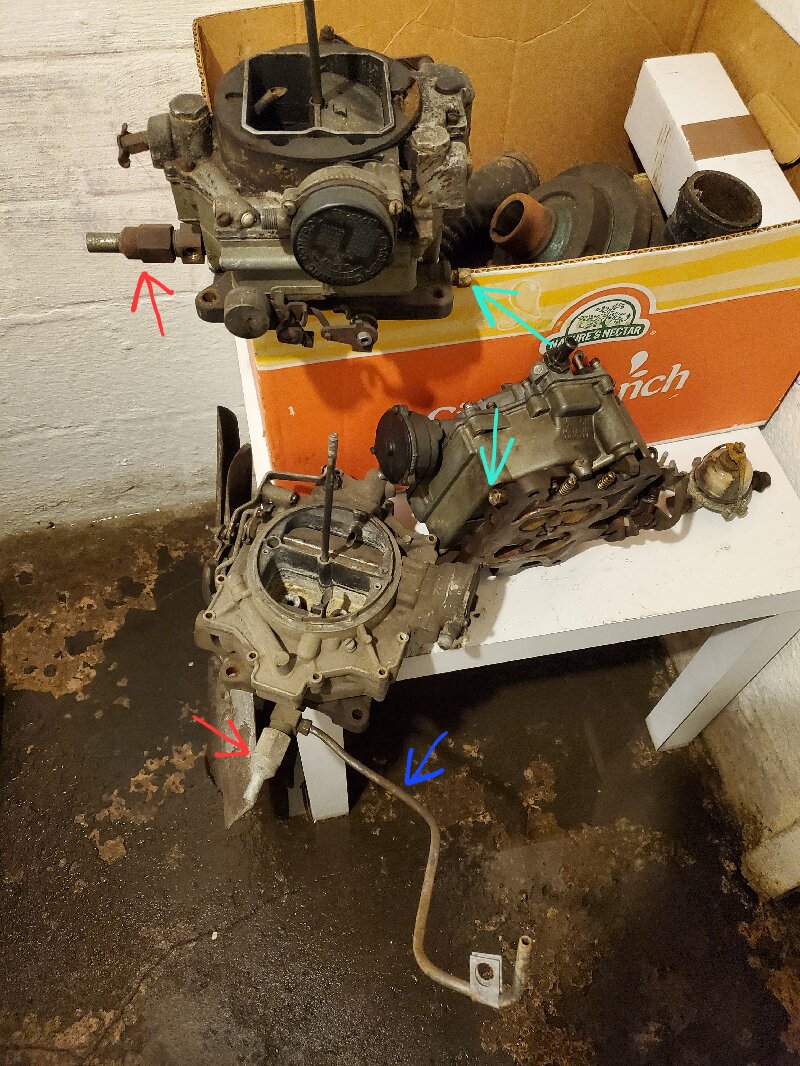  Screenshot_20240530-203717_Gallery.jpg (856.16 KB) Screenshot_20240530-203717_Gallery.jpg (856.16 KB)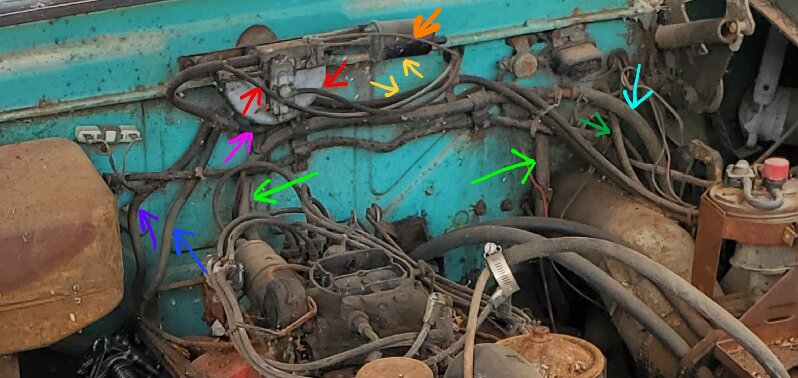  Screenshot_20240530_205925.jpg (348.86 KB) Screenshot_20240530_205925.jpg (348.86 KB)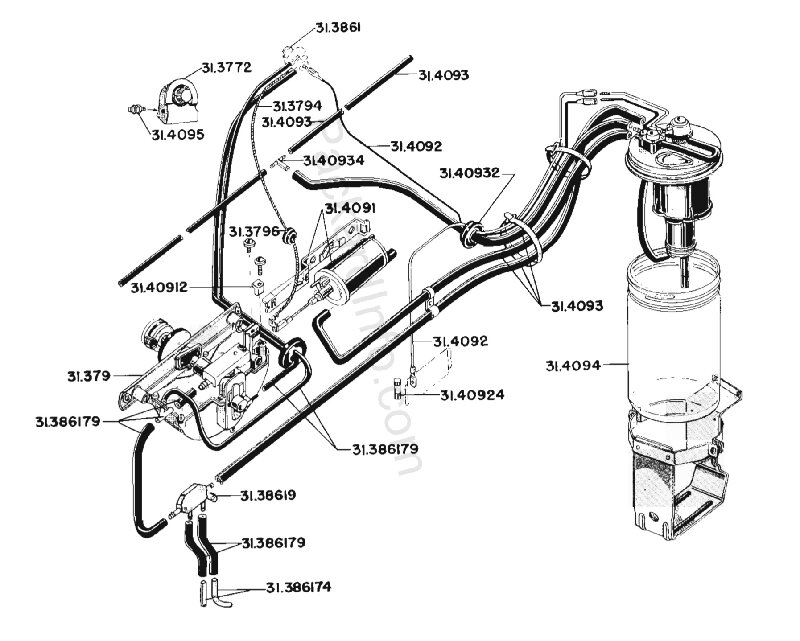  20240530_205638.jpg (1,193.71 KB) 20240530_205638.jpg (1,193.71 KB)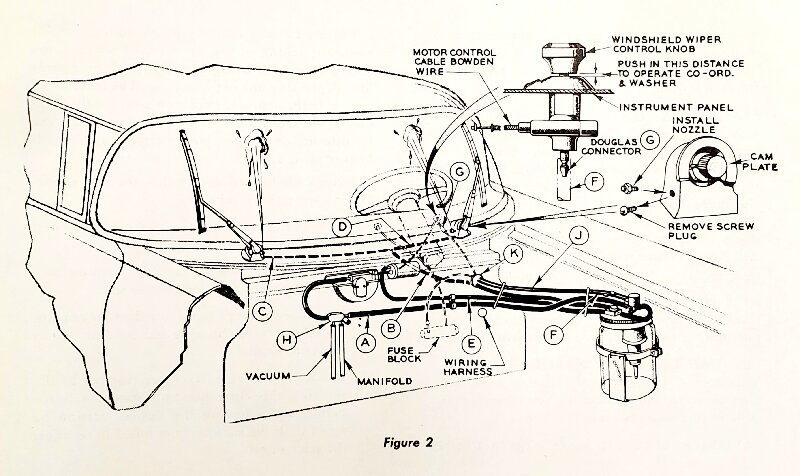  20240530_205155.jpg (677.58 KB) 20240530_205155.jpg (677.58 KB)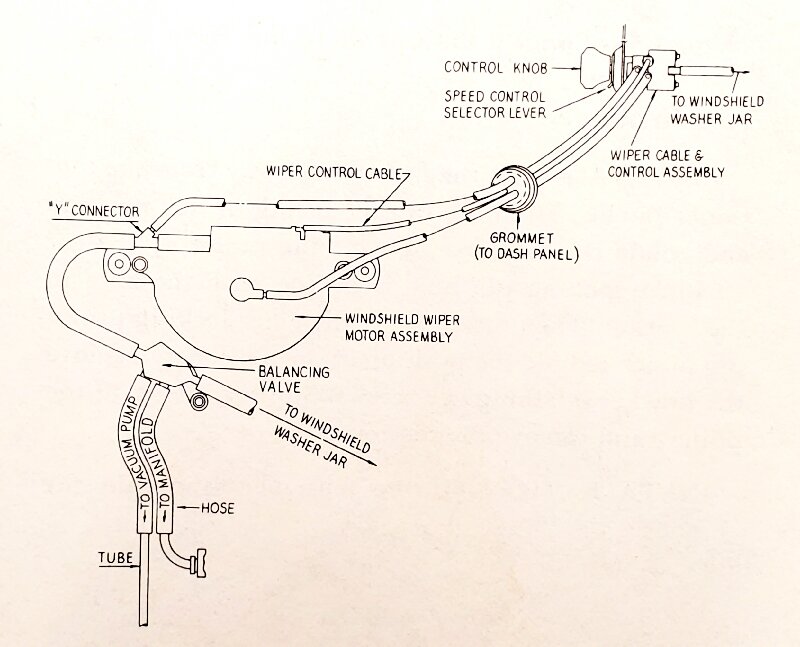
Posted on: 5/30 20:50
|
|||
|
'55 400. Needs aesthetic parts put back on, and electrical system sorted.
'55 Clipper Deluxe. Engine is stuck-ish. |
||||
|
||||
|
Re: Vacuum Lines, Windshield Wipers
|
||||
|---|---|---|---|---|
|
Home away from home
|
Good point. I'm not as much concerned about them since things were done any number of ways. However the Hudson and Nash setup with the vacuum pump on the fuel pump is worth mentioning.
Pretty much all the vacuum/fuel pump setups use either an original (for Hudson/Nash 320 engines) rebuilt AC 4293 pump, or use a new 1956 Ford Thunderbird pump. Either way, the vacuum lines are connected up top. There are pictures from here of a seemingly original "Hash" 320 engine. Of course, they don't run to the exact same places as on a Packard, but it would not be hard to fab up lines and run them in the original locations for a convincing and authentic look.
Posted on: 5/31 9:36
|
|||
|
'55 400. Needs aesthetic parts put back on, and electrical system sorted.
'55 Clipper Deluxe. Engine is stuck-ish. |
||||
|
||||
|
Re: Vacuum Lines, Windshield Wipers
|
||||
|---|---|---|---|---|
|
Home away from home
|
On some, the washer reservoir is mounted to the back of the passenger side inner fender. Was that 1956 only or did it depend on whether it had factory A/C?
Posted on: 5/31 13:49
|
|||
|
||||
|
Re: Vacuum Lines, Windshield Wipers
|
||||
|---|---|---|---|---|
|
Home away from home
|
The "hideaway" location was used for 56 regardless of Factory A/C.
Posted on: 5/31 14:20
|
|||
|
'55 400. Needs aesthetic parts put back on, and electrical system sorted.
'55 Clipper Deluxe. Engine is stuck-ish. |
||||
|
||||
|
Re: Vacuum Lines, Windshield Wipers
|
||||
|---|---|---|---|---|
|
Forum Ambassador
|
The reason 56 WS washers moved was not because of AC but rather to make space to keep electric shift relays accessible and close to existing looms, firewall openings, and other electrical.
Posted on: 5/31 15:05
|
|||
|
Howard
|
||||
|
||||
|
Re: Vacuum Lines, Windshield Wipers
|
||||
|---|---|---|---|---|
|
Home away from home
|
Ok, I finally found some good images of the fuel mounted vacuum pump. This is off of a 1955 Nash Ambassador.
You can see the vacuum line from the manifold that goes to the vacuum pump, then that goes back up directly to the wipers. The Nash manual also specifies a test for the vacuum pump. Assuming the wipers have good performance when the system is typically operated, then disconnecting the manifold vacuum line from the pump, such that it draws directly from the air, should still slowly operate the wipers. Attach file:  nash motor.jpg (1,648.79 KB) nash motor.jpg (1,648.79 KB)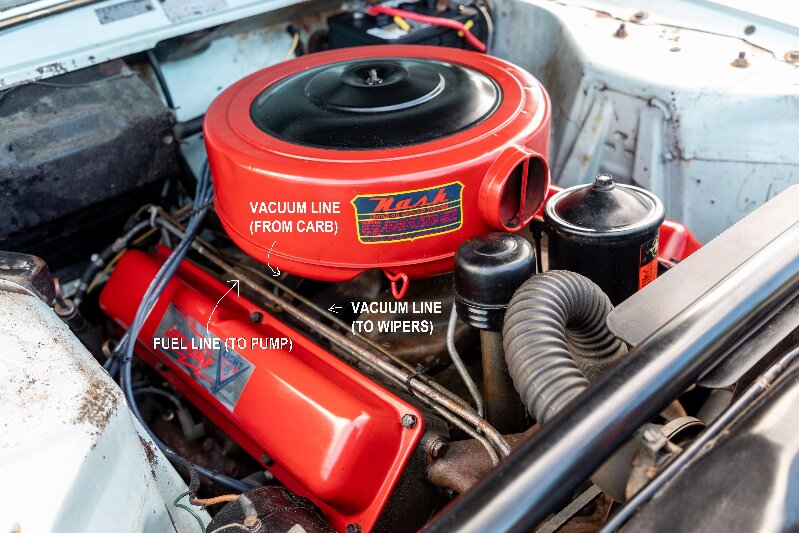  nash motor 2.jpg (1,017.66 KB) nash motor 2.jpg (1,017.66 KB)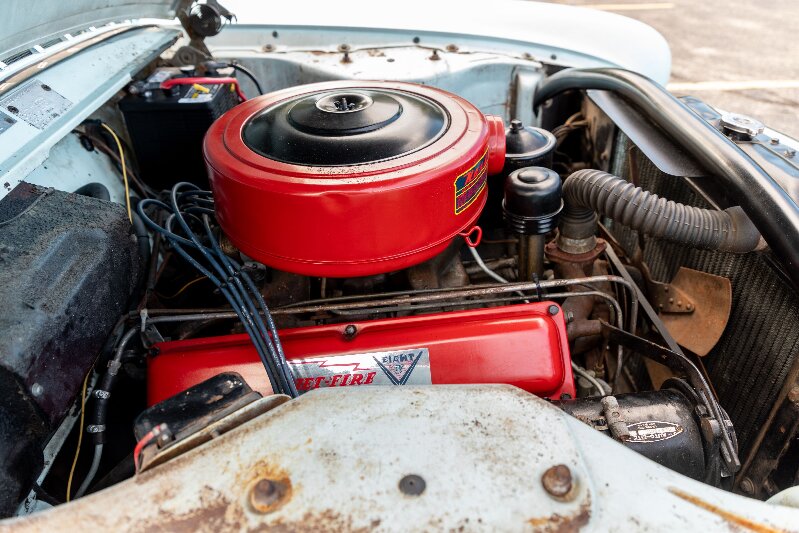  nash manual wiper pump test.png (51.22 KB) nash manual wiper pump test.png (51.22 KB)
Posted on: 5/31 15:40
|
|||
|
'55 400. Needs aesthetic parts put back on, and electrical system sorted.
'55 Clipper Deluxe. Engine is stuck-ish. |
||||
|
||||
|
Re: Vacuum Lines, Windshield Wipers
|
||||
|---|---|---|---|---|
|
Forum Ambassador
|
Thanks for posting something in writing and an actual factory recommendation on testing the vacuum side of fuel pumps.. That test should be made available in other forums because it holds true for all cars with dual action fuel pumps.
The typical dual action fuel pump vacuum side does not have the volume to operate the wiper at normal speed but the whole purpose of an aux supply is to make sure some vacuum is available to keep the blades moving. Any dual action pump should have enough vacuum power as measured in mm/hg to keep the motor moving slowly as the test suggests. Without the aux supply a large sustained load on the engine or sudden mashing of the accelerator to the floor if you want to pass some cars cuts engine vacuum to almost zero and blades will stop if something is wrong with the extra supply.
Posted on: 5/31 16:03
|
|||
|
Howard
|
||||
|
||||
|
Re: Vacuum Lines, Windshield Wipers
|
||||
|---|---|---|---|---|
|
Home away from home
|
Thanks to happy I have a Hash 320 that is going in my Deluxe; I double checked and it came with the original lines that I pointed out in the pictures below on the Nash engine.
Though clearly the carb line has been repaired, it's still a good visual reference. The pump to wipers line (left) should work as-is on a Packard; the center fuel line is irrelevant, and the line on the right will need remade in situ but should end up more or less the same shape, just the center part being longer.
Posted on: 6/2 20:44
|
|||
|
'55 400. Needs aesthetic parts put back on, and electrical system sorted.
'55 Clipper Deluxe. Engine is stuck-ish. |
||||
|
||||

